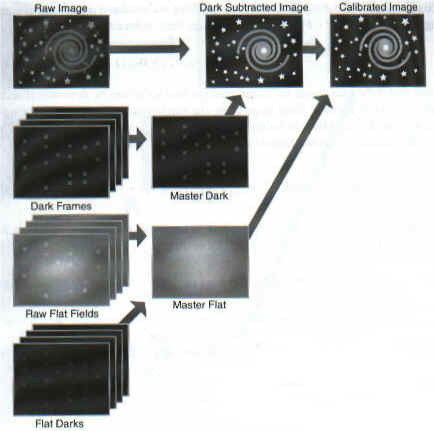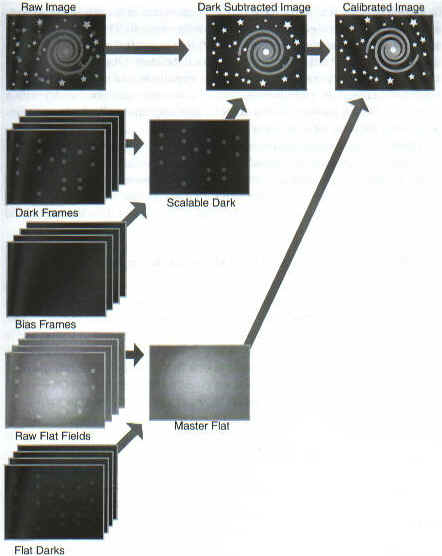

| Home | Astronomy Home | My Clear Skies | My Photos | Cool Stuff I Made | Tips & Procedures | My Setup |
| Scope Maintenance | Wanna Go Portable | Clear Sky Clock | Clean Your Optics | Image Calibration | Scope Collimation |
Basic calibration requires one or more (preferably five) dark frames combined together to create a master dark frame. The resulting dark frame is subtracted from the raw. This removes dark current, hot pixels and bias level. Basic calibration will not correct for CCD sensitivity variation or vignetting. Dark Frames must be the same exposure length as your raw image and should be taken during the same session as the raws, using the same optical settings (focus, temp, position, eyepiece, etc)


Advanced Calibration is used to achieve the highest level of image calibration. The observer is ultimately relieved of the need to have equal integration time for images and their subsequent dark frames. Master dark frames can be used to calibrate all images independent of the raw's exposure length. Flat Darks Frames should have the same exposure length as the raw flat frames.
